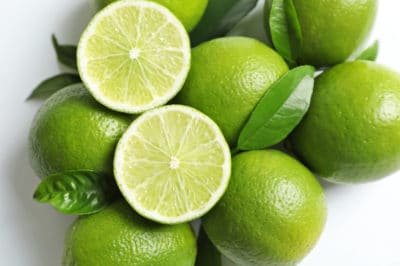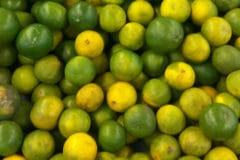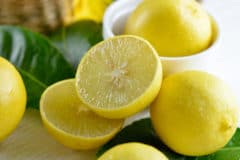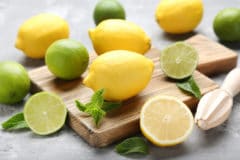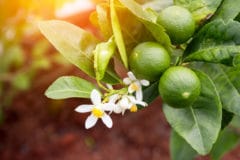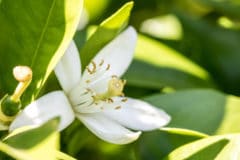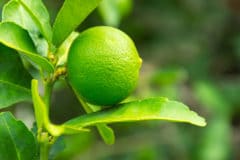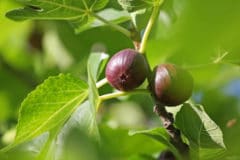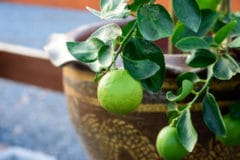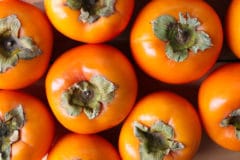Don’t Expect a Lime-Ripening Season
Lime growers would have a much easier time if Mother Nature had designated a single time of year for limes to ripen. But no matter where they grow, lime trees (Citrus spp.) of all varieties like to flower and fruit for months at a time:
- Persian limes (Citrus latifolia, USDA zones 8 through 11) are loaded with ripening fruit between July and September. Their production starts tailing off in October, becomes sporadic between and April and begins picking up again in May.
- Key lime trees (Citrus aurantifolia, USDA zones 10 and 11) are the most productive from August through December.
- Finger limes (Citrus australasica, USDA zones 10 and 11) flower from April through October, with fruit ripening from May through November.
The Signs a Lime Is Ripe
Ripening also affects a lime’s color, texture, firmness and weight.
Color
Both Persian and Key limes change from deep green to lemon-yellow as they ripen. Yellow Persian limes, however, are likely to taste bitter. Commercial growers harvest them when they’re 50- to 75-percent green. Pick Key limes when they’re yellow-green to yellow.
Finger Limes
Although finger limes also start out dark green, different cultivars ripen to different colors. They include:
- ‘Alstonville’ — greenish-black fruit with light-green pulp.
- ‘Blunobia Pink Crystal’ — greenish-brown fruit with dark-pink pulp.
- ‘Judy’s Everbearing’ –- maroon fruit with green to deep-pink pulp.
- ‘Gold Finger’ — golden-yellow fruit with pale-yellow to translucent pulp.
Finger limes are picked fully colored, after they ripen completely.
Texture, Firmness and Weight
Ripe limes contain enough juice to smooth their skins and give them a solid, weighty feel. They’ll yield just slightly to gentle pressure. Rock-hard ones are low on juice and wrinkled ones are past their prime.
The Twist Test
When a lime checks the color, texture, firmness and weight boxes, the twist test confirms its ripeness. Simultaneously pull it toward you and twist it lightly. If it resists pulling loose, it needs more time on the tree.
Expert gardener’s tip: All limes stop ripening as soon as they’re picked.
